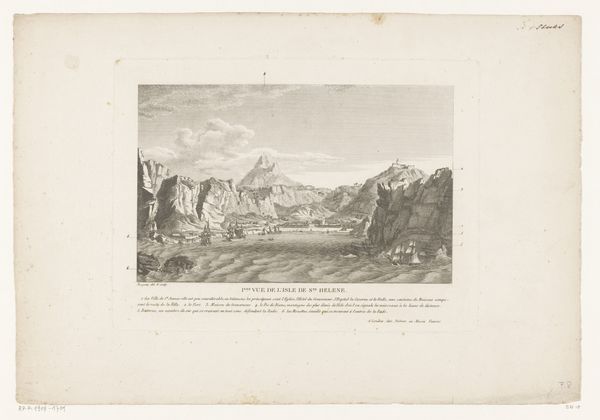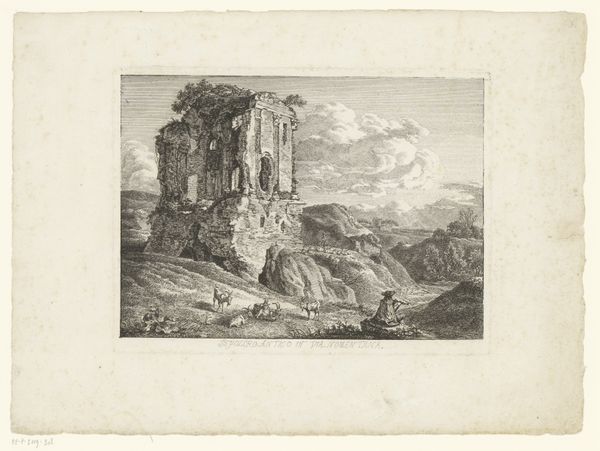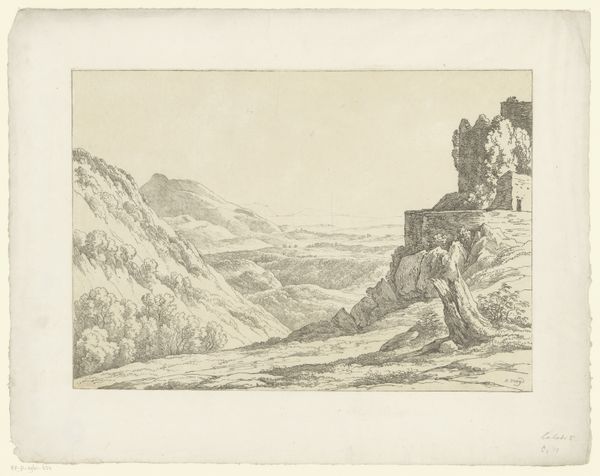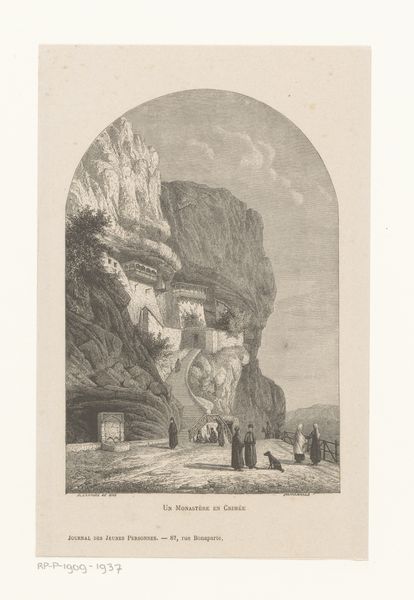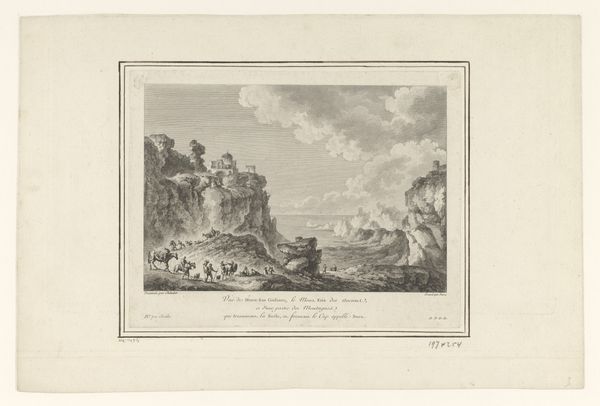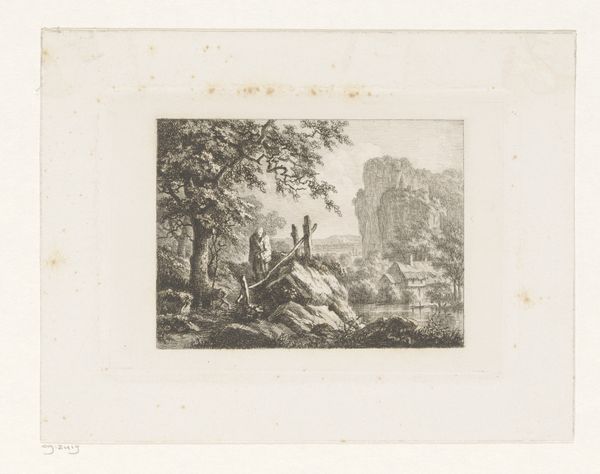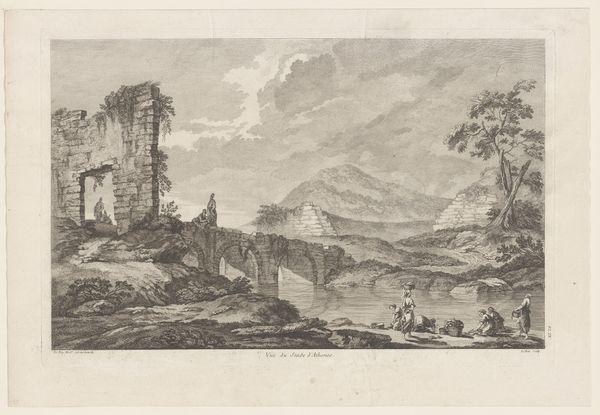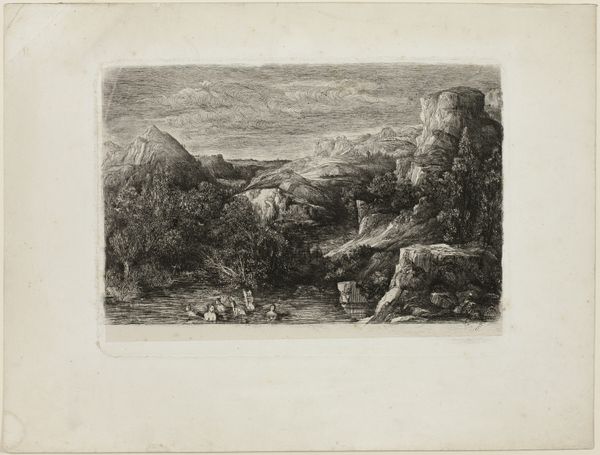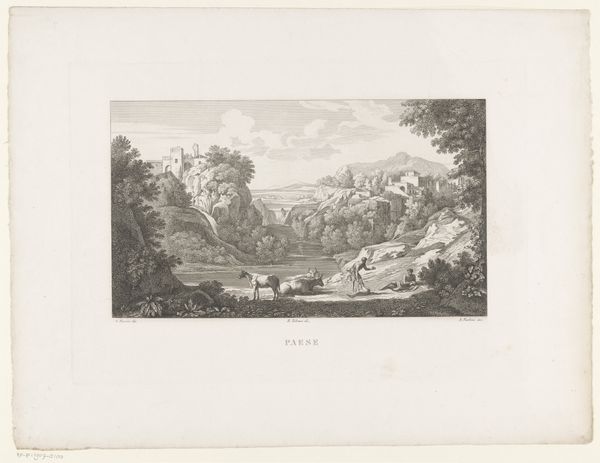
Dimensions: height 181 mm, width 238 mm
Copyright: Rijks Museum: Open Domain
Curator: This is "Gezicht op bron van Vaucluse," or "View of the Source of Vaucluse," an engraving and watercolor by Jérôme Paris, created sometime between 1754 and 1810. Editor: It's a beautifully rendered landscape! The monochromatic tones give it a sense of timelessness and almost a dream-like quality. The starkness contrasts dramatically with the dynamic scene depicted. Curator: Indeed. Paris created this piece during a time of significant social upheaval. Examining the source of Vaucluse through art-historical lenses lets us question why natural landscapes became such powerful cultural symbols. Consider Romanticism's valorization of nature and its complicated relationship with socio-political changes of the 18th century. How did views like this—seemingly untouched— function in a world that was rapidly industrializing? Editor: Good point. One can also appreciate it within the context of tourism. This period saw a rise in travel, particularly amongst the elite, and views like this often functioned as souvenirs or reminders of grand tours. The printing and distribution of such imagery allowed for the democratization of landscape viewing, making places like Vaucluse accessible to a broader audience through visual representation. Curator: Absolutely. And, think about whose perspectives are reflected in this work. It emphasizes the beauty of nature, it tends to gloss over other perspectives, like the impact of elite visitors or how marginalized communities experienced such "natural" spaces. Are these depictions a form of visual colonialism, where idealized landscapes contribute to erasing the lived realities of some groups while favoring those with leisure and power? Editor: That makes me think of the picturesque aesthetic prevalent at the time, which had specific codes about how nature "should" be viewed, often manipulating environments to fit those ideals. Curator: Right. So a print like this also tells us something about how power is exercised through aesthetic representation, normalizing certain ways of seeing and experiencing the world, and who is involved or left out in those artistic renderings. Editor: It's a print, and prints, more so than unique painting for example, allowed for distribution on a grand scale...making it a very public kind of art. Curator: Looking at the “View of the Source of Vaucluse" encourages us to understand both its artistic merit and also its broader cultural influence, and what may not have been highlighted within this artistic choice. Editor: Examining the intersection between nature, representation, and societal power allows us to appreciate art as more than just aesthetic.
Comments
No comments
Be the first to comment and join the conversation on the ultimate creative platform.
